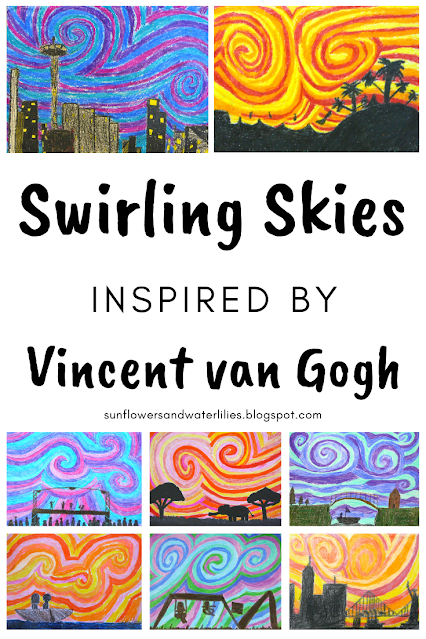Still Life Painting
Still life drawing is a great tool to help students sharpen their observation skills, practice overlapping and proportion, and create shading. It also results in some fabulous works of art!
Giving students freedom to choose their own still life objects, as well as exposing them to more contemporary still life artists, helps this time-honored art practice feel a bit less old-fashioned.
7th grade students look at still life paintings by contemporary
realism artist Janet Fish before we create these vibrant watercolor still life paintings.
Step 1: Getting inspired, setting up our still life objects, and sketching ideas
While the classic artists are always great to study, contemporary artists can often feel more relevant to students. Realism painter Janet Fish is a great artist to learn about when creating still life paintings with students! Her paintings focus on traditional subjects like fruit, flowers, and glass, but the vibrant colors give off a distinctly contemporary vibe, while her realistic rendering never fails to impress students. I begin this lesson by showing my students a PowerPoint all about Janet Fish and her art. Subscribe to my All About Art Newsletter below and get this free PowerPoint sent to your inbox so you can teach your students about her, too!
My art room doesn’t have a ton of space, and still life
objects can take up quite a bit of that space, so I find it best to split the
class into groups of 4-6 students and have each group set up a collaborative still
life for all of them to draw. I encourage
students to bring objects in from home, and I also provide plenty of
traditional still life objects for them to choose from (fake flowers, glass
vases, fake fruit, and baskets).
After reviewing a few art vocab words like Thumbnail sketches, Composition, and Proportion, we use a viewfinder to crop various compositions from the still life and draw thumbnail sketches of a few composition ideas. We begin by drawing rough shapes and a general layout, and then draw more specific shapes and then smaller details.
Step 2: Making our final still life drawing
We look at all our composition sketches and draw the best
one on final watercolor paper. Again, we
begin by drawing the general shapes of flower bouquets, fruit baskets, and
other large objects. Then we can draw
the shapes and sizes of the smaller objects like individual fruit and flower
blooms, comparing the sizes of objects in the still life to keep the drawing
proportional.
Once all the main shapes are drawn and proportional, we can add details to our drawings and a horizontal line for the tabletop the objects are set on. This line should be behind the still life objects, not beneath them.
Step 3: Painting
We begin our painting with the background and tabletop since it is much easier to paint the background between flower stems before the stems have been painted. I encourage students to come up with a background that is interesting, and I show a few examples of alternatives to a plain, solid color background. I also suggest that the background color should contrast colors in the still life, to help the still life objects stand out better.
To help create the reflective glare on glass vases and shiny
fruit, students can use a resist technique – either crayon resist or masking
tape resist. Students can paint transparent
vases by using the same colors as the background but making them darker in the
center and lighter towards the edges so there are not entirely invisible.
As we paint our still life objects, I focus on two objectives: mixing custom colors, and creating shading with watercolors. My students all use the same 8-pan watercolor sets, so I remind them that the only way to set the colors in their paintings apart from the others in the class is to mix their own unique colors. I demonstrate how to create gradation with watercolors, adding more water to make the colors lighter and less opaque.
My middle schoolers really make progress on their drawing in
painting skills through the course of this project, and they are so proud of
the results!
Happy Painting!
To introduce more students to Janet Fish and her vibrant
contemporary still life paintings, I am sharing my Janet Fish PowerPoint with my newsletter subscribers! Subscribe now to teach your students all about
this great artist!
If you enjoy using this PowerPoint, check out my store, All About Art, for more PowerPoints to teach your students about dozens of other great
artists!











Comments
Post a Comment